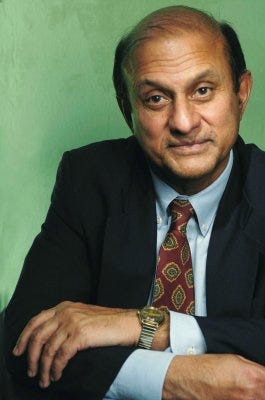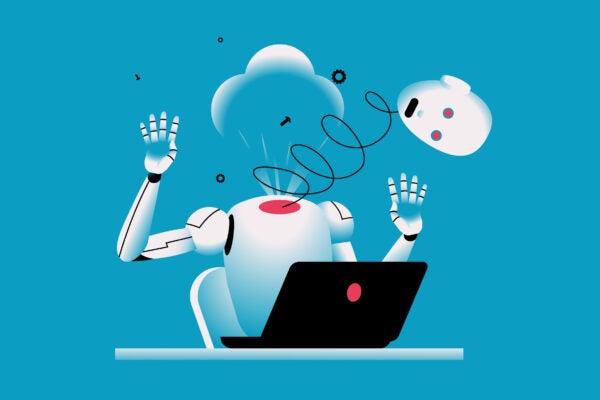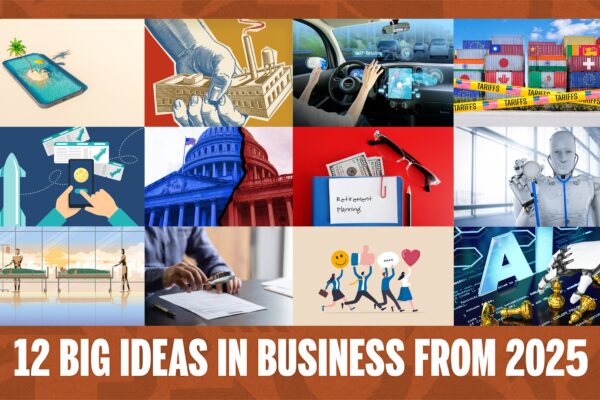3 Billion Rural Consumers — Can Marketers Profit From Them?
Texas McCombs Professor Vijay Mahajan has a powerful message for global marketers: “Rural does not mean poor”
By Poornima Subramanian

The rural consumer growth story presents one of the biggest opportunities for businesses to expand their footprint to new geographies and markets. While several corporates have established a firm footing, startups too are investing to claim a share of the pie — about three billion consumers. In this exclusive to Indian Management, Vijay Mahajan, John P Harbin Centennial Chair in Business at the McCombs School of Business, University of Texas and author of Rise of Rural Consumers in Developing Countries, talks about the forces boosting rural prosperity, shifts in consumption patterns, and the need for marketers to understand that aspirations are same across markets, whether rural or urban.
Earlier, rural consumers were seen as a small target group. But now most businesses believe it is a big market opportunity and are strategising to capture it. How has the segment been redefined?
Two important factors have redefined this segment: size and spending power. Let us first look at size. It is estimated there are around 3.4 billion rural consumers in the world and this segment is almost half of the total world population. Of this, three billion live in Asia and Africa — one billion in South Asia alone. So that is a huge number; almost one third of the world’s rural population lives in South Asia. Which is why it becomes imperative for companies such as Unilever to have a separate group, the South Asia Group.
“The second aspect is: yes, their numbers are huge, but do they have the money? The premise of my book, Rise, is that rural does not mean poor. “ — Vijay Mahajan
Most of us have a tendency to equate rural consumers with poverty but it is not so. Irrespective of the segments — Rural 1, Rural 2 or Rural 3 — rural is not equal to poor. For understanding these markets better, I have condensed the five SEC categories — A,B,C,D,and E — into three. A and B have been grouped into Rural 1, which is the most affluent segment consisting of wealthy farmers, professionals, and well-paid workers. Rural 2 includes category C and constitutes the middle class. And D and E categories are bunched into Rural 3 — least affluent customers such as small farmers, daily wage labourers, and others. If one looks at the data for India, almost 35% of rural consumers are in Rural 1 and Rural 2 segments — the middle or upper middle class. This translates to almost 270 million consumers with discretionary spending power, in the country alone.
The book also argues that Rural 3 people also have their needs. Their prosperity is linked to the migrants who send in huge remittances, from within the country or abroad. Though they are away, thanks to technology, they are connected to their homes. They send money to build homes, and send gifts during festivals. So across the board, whether they are Rural 3, or Rural 1 or Rural 2, migrants play a dominant role.
As businesses get these two insights, they realise they cannot afford to ignore this opportunity. That urban markets are getting saturated and there is stiff competition, and they need to look at rural consumers for expansion.
What are the shifts in consumption patterns in the context of the rising rural economy?
Some consumption items like gold do much better in rural than in urban areas. India’s rural consumers buy more gold than their urban counterparts, especially during religious festivals like Diwali and also after the harvest season. In terms of other products, research indicates that the packaged consumer goods industry is witnessing high growth rate in the rural areas.

This is majorly due to rural migrants. They influence their family’s consumption pattern and aspire to give them the comforts available in urban areas. Satellite TV too has played a major role — it has created an awareness of various products and services available in urban areas. And lastly, mobile phones. India is the biggest user of WhatsApp. Companies are using mobile technology to reach consumers at places where electricity is sporadic. For example, HUL created Kan Khajuro Tesan or ‘centipede radio channel’, a free subscriber service with entertainment content. It offers blocks of entertainment, including popular and devotional music, and jokes interspersed with ads of Unilever brands. The company tracks which ads are working based on how long the callers stay online. The content is in the relevant local language for each consumer. The programme, over the years, grew popular, and brand awareness of HUL products soared in rural areas.
Businesses have figured out various methods to educate rural consumers. But once they become aware, the question is whether they would purchase the products. And that depends on two factors — money and availability.
One of the key aspects that affect the rural economy is migration for better opportunities. The government too is developing infrastructure. How is this affecting companies?
Mass migration depends on the country one lives in. For example, in China, people simply cannot migrate from their native place and find jobs in other provinces. However, many work around this rule, and China now has almost 245 million rural migrants.
However, one must remember two aspects — the lifestyle of most of these rural migrants automatically improves when they come to urban areas. Further, they actually take the urban lifestyle back to their siblings and families.
Most of the rural areas depend on agriculture, and harvest and religious functions play a major role. During the Chinese New Year, everybody leaves urban centres and goes back to their homes. It is the biggest human migration that takes place in a few days anywhere in the world. You see a similar phenomenon in Indonesia after Ramadan — many middle class and upper middle class families move into hotels as they do not have help at home. However, mass migration does not necessarily mean people abandon their homes and roots. So how, as a marketing professional, do I respond to this?
Scholars opine that urbanisation is here to stay. But I do not think things will drastically change overnight. Presently, in terms of percentage of urbanisation, India is what the
US was in 1880. And China is what the US was in 1920 (around 52%). It took the US 90 years to move from an urbanization rate of 52% to the present 81%. So I do not agree that we may see something like 81% urbanisation in the near future. Infrastructure development will in fact work differently. Products and services will be more accessible and people will start questioning the need to move. Secondly, it will increase the flow — people will move out and move in.
Is it better to view consumers as growth clusters instead of segregating them as rural and urban?
Growth cluster is an outcome, not a lifestyle. Rural and urban are lifestyles. In rural areas, family relationships are more important. As long as agriculture plays a major role in their lives, their lifestyle in terms of celebration of functions and holidays will not change much.
Growth clusters are the outcome of rising incomes, so on and so forth. However, the rural-urban distinction is still very valid to me because it indicates a lifestyle, it indicates availability, it indicates how you get a product, and how you relate to people. Shopping malls will not come up in rural areas overnight.
Rural economy is also volatile, especially in a country like India. What should companies do to build a robust rural strategy that will sustain them even during the downturn?
Not only India, but the entire South Asia is dependent on the monsoon. The question is: how does one cope with it? Can we develop a product that would actually protect farmers when there is a drought, or when they have borrowed heavy loans? And secondly, if there is a good season, can we help them save some of it for the future?
Farmers have learnt over time and create buffers to tide over lean periods. They make sure they diversify their income — somebody from the family always works in a town. But they do not save much and this is where financial inclusion plays an important part. Farmers make big purchases immediately after harvest — seeds for the next season, fertilizers, vehicles, and consumer durables. They should be taught to manage their money and buy insurance policies that would protect them during disasters.
Are the buying patterns and purchase decisions of rural consumers different from those of their urban counterparts?
One aspect in which there is no distinction between the rural and urban consumer is: aspiration. When a child is unwell, both the rural and urban mother is equally concerned. The solution they find may differ based on their spending power, but the aspiration levels are not different. This insight is important for marketers. Marketing is about both the aspirations.

The other aspects are availability of goods and money. Rural incomes are rising, maybe not drastically, and this in turn is increasing consumption.
As far as availability is concerned, companies are experimenting with innovative distribution methods. If it is a service, then mobile technology plays a major role. However, if it is a physical good, then it becomes a challenge. But infrastructure is helping them improve their services. The ingenuity of local entrepreneurs too goes a long way towards improving distribution. If they sense a demand for a product, they will figure out a way to make it available.
Corporates too are tackling the last-mile challenge with innovative strategies. For example, Hero sends their service people on motorbikes to rural areas. Unilever started something known as the Platinum Program. Stores under this programme have a blue star symbol. The star is more than a decoration. It indicates to consumers that they are entering a high-quality Platinum store, where they could find a wider assortment of Unilever’s top brands. Unilever helps the shopkeepers professionalise by improving their merchandising, helping add new product categories, designing store layouts, and developing promotions. As a result, these stores look more modern and bring the urban shopping experience to rural customers.
Similarly, in Pakistan, Unilever runs an initiative called Guddi Baji (good sister) — a programme that brings urban concepts of beauty to rural areas, where more than 68% of the women in the country live. Like those in urban areas, these women too aspire to look their best, but their awareness of specific beauty products remains low. And since most do not shop for their families, they have little chance to sample or buy beauty products. The Guddi Bajis bridge this gap by providing them beauty services and advice. And they naturally sell Unilever products.
The company engaged with NGOs and helped provide training to women, helping them earn money and contribute to household income. The training programme offered them information about products, and beauty and sales techniques. Women could make money by charging for their services. They could use any product, but could sell only Unilever brands. And with those sales, they could earn incentives such as makeup brushes, hair dryers, and mirrors. This is a really innovative and cost effective way to reach products to rural areas. Further, these programmes empower women and that helps raise family and social standards. A win-win scenario for all involved.
Ideal segmentation strategy for a rural market…
Earlier, there used to be separate strategies for urban and rural consumers. But now, many are using classification that applies to both urban and rural. In my view, the LSM (Living Standards Measure) classification is uniform. And when somebody says LSM3, it means the same whether rural or urban.
What should organisations keep in mind while designing products and services for rural markets considering the strong influence of religion and beliefs rooted in their tradition and culture?
Good marketers should always remember that customer is king, whether urban or rural. You should never say they are economically weaker and therefore cannot afford a certain product/service. Look at recent commercials of the television programme Kaun Banega Crorepati. They have beautifully captured the aspirational element. They send across the message that participating in the show could help have a better lifestyle — showing what they could have and not what they do not have.
Marketers should realise consumers are consumers. The ticket size does not matter. Look at McDonald’s. They are a multi-billion dollar company, but their average transaction is just around $3 or $4. As aspirations are similar across urban and rural consumers, the deciding factor is money. Can they afford it? And that is when just-in-time consumption comes into play. For example, today most top brands of shampoos and conditioners are available in sachets. People would buy these sachets only when they need to use the product. Though they buy in small quantities and the transaction cost is low, they are aware of the brand name. They may not consume the brand name all the time but whenever they have a guest, they would use a brand name.
So businesses have to think effectively on pricing and packaging, and also devise a cost-effective way to make them available. I have seen that shopkeepers sometimes chop a bar of soap into smaller pieces and selling them. The branding is lost in this exercise. However, in the case of chocolates, break one into pieces and each will have the name of the brand. So companies should think of creating a soap where each small piece will have the brand name.
However, this is not to say that all rural consumers are poor. When you are targeting Rural 3, you need to have a very creative strategy to actually make your product available to them.
What role does pricing play in attracting the rural consumer segment?
Rural 1 and Rural 2 are not an issue. Rural 1 sometimes come to the nearest cities to shop. In the case of Rural 2, rural migrants might bring the goods when they come home for a visit. However, Rural 3 is where companies need to focus on with respect to pricing and packaging.
Role of technology as the chief enabler in the rural markets…

The digital leapfrog is simply amazing. Look at how the missed call phenomenon has worked. Valerie Wagoner, an American, worked with two Indian partners to build a platform that would help companies take advantage of the missed call practice and reach potential customer groups. They could reach consumers who do not have smartphones, internet access, or use Facebook or Twitter. Today, companies use interactive missed call campaigns to offer coupons and cell phone top-ups, promote new products, conduct word-of-mouth referral campaigns, and run contests, polls and surveys.
In China, Tao Bao is allowing people from small villages to sell their products online. And in places like Indonesia, where tourism is a major foreign exchange earner, villagers are advertising their homes offering an authentic Indonesian cultural experience on Airbnb and the government is supporting them. So technology is the enabler — right from helping migrants to stay in touch with their homes to advertising their goods and services to the urban consumer.
This is such an interesting paradox. On one hand, most developing countries are still struggling to solve issues such as sanitation, infrastructure, and primary health; on the other, technology has made deep inroads into rural areas — whether it is transferring payments, or staying in touch, everyone is connected through Whatsapp, Facebook and other such platforms. Technology has really transformed the landscape.
Originally published as Untapped Potential in Indian Management magazine, October 2017. Spelling has been preserved.
About this Post
Share:


